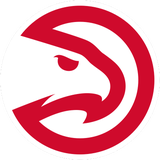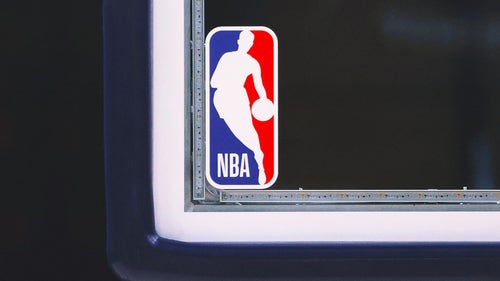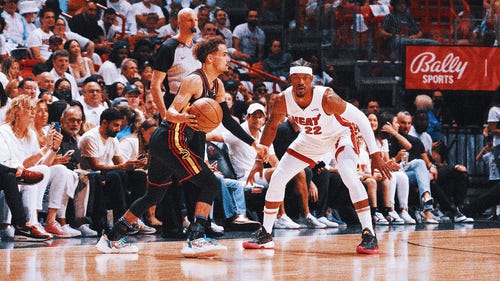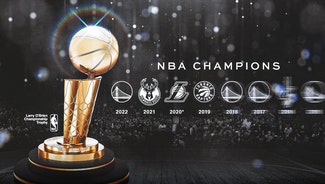
Young And Trending In The NBA: Tim Hardaway Jr. On The Rise
In the second installment of our NBA Young and Trending series, we look at the maturing game of Tim Hardaway Jr., and the underwhelming Willie Cauley-Stein
Trending Up
Tim Hardaway Jr.
Tim Hardaway Jr. was traded from the New York Knicks to the Atlanta Hawks as part of a three-way deal that left the Knicks with the draft rights to No. 19 overall pick, Jerian Grant. This happened on the night of the 2015 NBA Draft.
Then, Knicks coach Derek Fisher weighed in on the trade at the time by saying, “I think Jerian has more skills as a guard in terms of ball-handling and decision-making that are really going to be helpful for us long-term.” Let’s just say Derek is no longer making important basketball decisions anymore…
In his final year with the Knicks, Hardaway averaged career highs in minutes per game (24.0) and scoring (17.2 points per 36 minutes). However, his 47.4 percent eFG% and low assist averages (2.7 per 36 minutes) resulted in him being labeled as an inefficient gunner whose upside was capped by a lack of playmaking skills.
More from Sir Charles In Charge
Rarely is it a good sign for a first-round draft pick to be traded after only his second season. When that player is already 23 years old and is dealt for a rookie who is also 23 years old, the sign might as well read R.I.P.
A year-and-a-half after being traded, however, Hardaway’s improved play within a structure more tailored to his strengths has resulted in the R.I.P sign now reading V.I.P.
The road to V.I.P. status hasn’t been short. In fact, D.N.P. was a more fitting acronym during his first season in Atlanta (done with acronyms, I promise). It took Hardaway over two months to earn the trust required to play in coach Mike Budenholzer’s modern, free-flowing system.
Even after cracking the rotation, Hardaway was merely a placeholder due to a lack of versatility on offense, and defensive instincts about as reliable as cell reception in the Mojave Desert.
This season, Jeff Teague’s departure has carved a new role for Hardaway in Atlanta. Formerly a spot shooter who played mostly off of Dennis Schroder’s penetration, Hardaway has been thrust into a playmaking role with the vanilla flavored game of Malcolm Delaney accompanying him off the bench.
As you might have guessed, Hardaway is thriving.
The user of 56 ball screens last year, Hardaway has been the ball handler in over 150 pick-and-rolls this season. While far from being a pick-and-roll maestro, he effectively uses screens to provide Atlanta with what they desperately need – scoring.
Hardaway is averaging a career high 18.4 points per 36 minutes with a healthy 53 percent eFG%. He’s relying slightly less on his three-point shot and attacking more closeouts. The result is a higher percentage of his shots coming from the paint. He’s also settling for less of the inefficient mid-range shots as well.
While his offensive game is better across the board, Hardaway’s defense still lags. He has shown flashes of excellence (especially in isolation situations), but can be a liability when asked to help and recover, which, in case you haven’t caught any NBA basketball this year, happens often.
Despite the spotty defense, Hardaway’s overall impact on the Hawks winning basketball games is profound. Whether in his bench role or complimenting the starters, the Hawks have been excellent with him on the court.
Hardaway has a plus-13.5 Net Rating (per NBAwowy) when joined by Malcolm Delaney and Mike Muscala in Atlanta’s bench unit. When Hardaway replaces Kyle Korver in the starting lineup, the Hawks are plus-16.2. Under a broader scope, Atlanta is plus-6.9 with Hardaway on the floor and Korver off, and minus-9.5 with Korver on the floor and Hardaway off.
Many saw Atlanta’s recent trade of Korver as means of recoupment for the 36-year-old soon-to-be free agent. That’s because it was. What certainly comforted Atlanta during the process, however, was the growth and positive impact of Hardaway.
So, let’s get this straight. In this his fourth NBA season, Hardaway is:
all without considerable improvement in his shooting percentages.
This screams one word and one word only – maturity.
As he approaches his 25th birthday in March, Hardaway’s game is finally starting to mature. With free agency looming, the timing couldn’t be any more perfect.
Trending Down
Willie Cauley-Stein
To quote the great Captain Obvious, “It takes time for young players to develop.”
This oft heard saying (and not an actual quote) applies to essentially any drafted player not named Tyreke Evans who ultimately becomes a contributor for an NBA team (Re: Tim Hardaway Jr.). Attached to it, however, is an ultimatum – improve and you’re in; don’t improve and you’re out.
While players in their second seasons are often afforded more than a year-and-a-half of service before they’re thrown in front of the judge, Willie Cauley-Stein isn’t a normal second-year player.
Already 23 years old, Cauley-Stein was taken No. 6 overall by the Sacramento Kings in 2014 under the notion that he would be a rim protecting, switch-onto-guards type of center from day one, and that his offensive game would come with time. So far, this notion hasn’t held up.
At Kentucky, Cauley-Stein was a paint-roaming goliath. Using his 7-feet frame, he blocked almost 2.3 shots per game his last two seasons in Lexington. In the NBA, Cauley-Stein’s height is merely average, and he hasn’t filled out his wiry frame to meet challenges at the rim on offense and defense.
Cauley-Stein is playing only 11.2 minutes a night for the lowly Kings, fading in and out of the rotation seemingly on a bi-weekly basis. He is definitely an above-average defender, but he isn’t dominant, and therefore can’t make up for the poor rate at which he rebounds and finishes at the rim.
According to Cauley-Stein, his issues aren’t from a lack of skill.
“I’m developing a lot during practice. People are going to be surprised. I have all the skills you need. It’s just locked up. When it gets unlocked, I’m going to be special.”
The skills I believe WCS is referring to are the following:
While turn-around jump shots may look cool, Cauley-Stein would better serve the Kings by simply finishing better at the rim. Of the 60 NBA centers attempting over two shots at the rim per game, WCS ranks 33rd in field goal percentage. He is coordinated in catching and finishing alley-oops from a variety of angles, but he wilts into sautéed spinach on normal finishes with any hint of contact.
Adding weight certainly would help. He’s still listed at his college playing weight, but his frame could easily support 20 pounds of #gainz put on gradually.
Cauley-Stein’s defense, while above-average, could also benefit from a bench press rep or two. A wide receiver in high school, WCS has tremendous agility for his size. That combination was his biggest selling point leading up to the draft, and is something he will flash on occasion for the Kings.
Unfortunately for Sacramento, Cauley-Stein will flash inconsistent energy and/or blown coverages as well. I’ll spare you the sight of that.
In total, Cauley-Stein possesses enough talent to still become a starting center in the NBA. Because of his lack of improvement, however, it’s just not where he’s trending.




